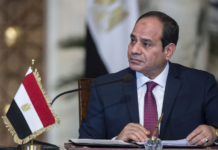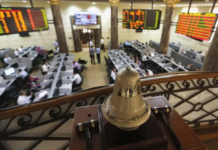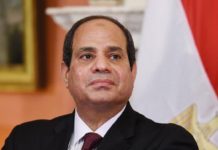2017 witnessed a radical change in the structure of the Egyptian economy and a reorganization of all its elements. Starting with the budget, balance of payments, trade balance, investment and tourism budgets, as well as, utilizing the mechanism of the banking system to serve the national economy, in light of planning a new structure of the state's public spending, mainly through restructuring government subsidies, capital investment in national projects and the State’s strategic targeting for growth, employment, improving services, etc.
On two parts, we will first discuss what has been going on in the economy over the last 3 years of restoring control and stability, and second, the launch of the radical reform towards the future ... tackling opportunities and challenges
Part I: From 2014 until now
The first phase of the reforms: the stage of pulse-sensing procedures after restoration of relative stability (July 2014 - September 2016)
- July 2014, reducing fuel subsidies by up to 78%.
- July 2014, cutting electricity subsidies by 30%.
-February 2016, Customs increase on 500 non-essential commodities by up to 40%.
- March 2016, reducing exchange rate to EGP.8.80 to the US dollar.
- September 2016, Adoption of VAT law instead of sales tax and raising it to 13% instead of 10%.
The second phase of the reforms: the stage of harsh measures and radical reform (November 2016 - December 2016)
- 1st November 2016, the first meeting of the Supreme Investment Council held, headed by the President Abdel Fattah Al-Sisi and its famous 17 decisions taken to facilitate the flow of investors' funds into Egypt.
- 3rd November 2016, officially releasing exchange rate
- 3rd November 2016, cutting Fuel subsidies between 7% and 87% as part of a plan to reorganize government expenditures.
- 3rd November 2016, raising the interest rate 300 basis points in order to support the Egyptian pound, stop the bleeding of its purchasing power and curb inflation as much as possible.
- 3rd November 2016, Governmental banks announce new deposit certificates with 16% and 20% to absorb foreign liquidity in the black market.
- 3rd November 2016, Adoption of the civil service law to reform the administrative apparatus of the state.
- 11th November 2016, The Executive Board of the International Monetary Fund approves a loan to Egypt for $12 billion over 3 years.
- 16th November 2016, receipt of the first tranche of the IMF loan worth $2.7 billion.
- December 2016, increasing customs of 364 non-essential commodities by up to 60%.
Phase III: Stage of anticipation and waiting for results (January 2017 - Dec 2017)
- Payment of $21 billion between November 2016 and its counterpart in 2017 without causing any disruption to the monetary system.
- Industrial production achieves its highest growth in 7 years for more than 50% instead of a 25% contraction in 2011
- A decline in the ratio of domestic public debt for the first time in 7 years to 91.1% instead of 96.7%.
- A reduction in the ratio of net domestic public debt for the first time in seven years to 77.4% instead of 84.4% (separating us only 17% away from the global safety rate of 60%).
- A historic decline and an unprecedented improvement of the trade balance deficit to nearly half (more than a $25 billion improvement).
- Combatting dollarization with the success of the banking system restoration of $56 billion either idle savings and the black market into the banking system and the official market for foreign currency in only 10 months (an amount equivalent to 80% of the state’s budget).
- PMI index (A world index measuring conditions of the private sector) announced for the first time in 25 months, the Egyptian economy has emerged from contraction to growth by 50.7 points.
- With a positive outlook from Standard & Poor's (A credit rating that measures the extent to which a country can repay its debt) and after being negative in May 2016 due to the deterioration of the economy after the fall of the Russian plane and deepened crisis of foreign currency, became stable thanks to the liberalization of the exchange rate in November 3, 2016 and finally positive on 10th November 2017 for the first time in two years.
- Foreign investments in government debt instruments, which is the most important indicator showing the degree of confidence of foreigners in the economy, returns to pre-2011 levels.
- Foreigners' holdings of Egyptian debt instruments increased from almost zero% in the wake of the January 2011 revolution, and at 1% before the exchange rate’s liberalization at the end of 2016, has progressed in big leaps from 6%, to 12%, to 20% and to 33% from November 2016 up to September 2017.
Which confirms the restoration of confidence of international institutions for financing and investment in the Egyptian market thanks to the liberalization of the exchange rate and the seriousness of reforms and restructuring the economy to launch its real capabilities
- Unemployment is also at its best levels since 2011, at less than 12% instead of 13.5% in 2014.
- Expectations of a decline in unemployment to 5.3% over 4 years by 2022.
- Budget deficit is shrinking to its lowest figures in 5 years at 10.9% and continues to decline, instead of 13.5% in 2013/2014.
-The highest growth rate of 5.2% in the first quarter of the fiscal year 2017/2018 instead of a contraction of 1.5% in the third quarter of the January 2011 revolution
- Tourism recovering after the shock of the Russian plane crash, with 211% growth in revenue, and 55% growth in numbers, with targeting new markets and taking advantage of the float boost.
- Foreign direct investment increases 26% and at its best level since 2011 by about 8 billion dollars.
- For the first time in international reports we see a spotlight on the importance of the administrative capital city, the Suez Canal axis, and infrastructural developments, in support of Egypt’s credit rating as per the Standard & Poor's (S&P) report.
- By putting the hot funds in a side account, the actual reserve is more than $45 billion, yet the declared and usable is $36.7 billion.
- Egypt has improved its rankings in the Global Competitiveness Report, we have exposed this report in an earlier edition, yet in a quick brief we outline the main points
1. The world's second most improved ranking in 2017.
2. Egypt's ranking progresses by 19 points between the 2014 and 2017 reports in the overall indicator of the report.
3. In the infrastructure quality index, we moved from 118 to 71 globally.
4. In terms of the number of procedures required to establish a company, we moved from 47 to 18 globally.
- Inflation dropped to 26% in November 2017 compared to 30.8% in October 2017
1. This is the first major drop occurring at once since the exchange rate was released and the biggest annual decline since 2011.
2. High inflation was giving a negative image that we are a country in crisis, yet indicators reveal that we are on our way out of the crisis and this is what is already happening.
3. Lower inflation paves the way for interest rate cuts and hence the beginning of a monetary easing policy.
4. Monetary facilitation means reducing interest rates, and increasing the supply of funds which makes the cost of borrowing less, unleashing investment and establishment of projects, which will accordingly lead to an increase in business activities, trade, employment and productivity.
• Current cash reserves cover 8 months of our imports and this is a safe rate, a dangerous rate is holding reserves that cover less than 90 days of imports, which was the case in Egypt, as we had $36 billion dollars before the revolution that went down to $15 billion by the end of 2011 and we remained around this level until the end of 2016, a level that covers between 3 and 4 months of our imports. Then came the big jump after the liberalization of the exchange rate, the partial recovery of tourism, the restoration of remittances from expatriates through the official channels and finally resorting to global debt markets which all lead to the reserves increase by about $20 billion.
• Egypt's position on Bloomberg's ClimateScope2017 Energy Index has improved by 23 ranks at one time, reaching 19 out of 71 countries assessed on the basis of their achievements in the transition to clean energy use and investment.
This general development is achieved as a result of a new direction of the state policies in this vital sector towards opening the door to private sector participation, diversifying local energy resources and exploiting our natural resources to its best utilization.
• At the top of this transformation was the Shamsoua Nubia project, the largest solar plantation station in the world, with $3.4 billion international and local investments, and a target output of 2,000 megawatts from 4 main stations and 32 sub-stations on an area of 37 square kilometers.
Part II: Future Outlook.... Opportunities and challenges
Opportunities and strengths
• Exiting the crushing crisis state that pressured the Egyptian economy from 2011 to 2016 and restoring our economic rates once again, as well as, stabilizing the pillars of financial and monetary stability.
Paving the road for unleashing the untapped potential of the Egyptian economy. The most important factor was decreasing the contribution of consumption to the rate of growth and increasing the contribution of investment and exports. The latest total growth rate of the Egyptian economy is close to 5%, about 50% of this rate is thanks to consumption and 50% by investments and exports.
Previously consumption controlled 95% of the growth rate between 2011-2014. Accordingly, the economy has been subject to risk because of the dependence on one element of growth, and the greater the components of growth the lower the risks surrounding the financial and monetary system of the state and the sustainability of the economy.
The good guidance of managing our foreign policy in a tense and confused region, which helped to ensure a relatively better stability compared to previous years and thus reduced uncertainties surrounding the Egyptian economy. The Palestinian reconciliation and its direct impact on border security in the eastern direction as well as improving the Egyptian military and political influence in eastern Libya, which helped in securing the western border.
The successful conclusion of an agreement with the Russian authorities on tourism and the expected return of flights between Russia and Cairo, pending the completion of the remaining terms of the agreement to include resorts on the Red Sea.
Starting the early production of gas fields faster than expected, which helps in reducing the energy deficit and the transition to self-sufficiency faster and thus reducing the foreign currency expenditures and improving our balance of trade and payments.
The gradual and growing political stability between 2014-2017 compared to 2011-2013.
Recognition of the most important international institutions that issue the most prominent and most famous economic indicators of this improvement, which strengthens the mental image of the state and the economy in general as we have elaborated in our previous articles.
Declining yields on Egyptian dollar bonds fell by 86 basis points to 135 basis points compared to January 2017. As well as, the yield on local treasury bills in pounds fell between 240 and 260 basis points compared to the issuing of the bills in July this year.
* Low yield refers to two elements:
A: Lower risks to the issuing country of these bonds.
B: The increase in demand/purchase of Egyptian bonds.
The governmental and international attention to the Suez Canal axis project as an important industrial export platform for the transport of goods to the Middle East, North Africa and Sub-Saharan region, is one of the most promising files over the coming period.
The relative improvement and trend towards moderate growth of the global trade movement and its impact on Egypt's revenues from foreign currency due to traffic through the Suez Canal, and its positive impact on the balance of payments and the state's cash reserve.
The stability and strength of the Egyptian-Saudi-UAE alliance and its role in deterring potential hostilities and thus stabilizing the situation and reducing the risks that have flared up in the region since 2010.
Gaps and points of weakness
The potential of popular unrest in light of what is apparent to us from the seriousness of the government to continue the program of reforms and the inclusion of a new reduction of electricity and fuel subsidies next summer and its consequences of raising prices for goods and services and thus the likelihood that this measure will fuel the public anger in the Egyptian street. We recommend the Egyptian economic decision makers the importance of monitoring the thermometer to measure the satisfaction and anger of the people before making any decision and the need to choose the most appropriate timing with attention to its proper marketing regarding any future tough actions needed to be taken further.
Inflation expectations by end of 2018 revolve around 13% up or down 3%
Continuation of agreements to reduce oil production and consequently decreasing supply as demand remains stable. The price of the barrel continues to rise with a negative impact on oil importing countries such as Egypt (the last price of Brent crude at the time of writing: $64 / barrel)
Tension between the Egyptian administration and its US counterpart over the Jerusalem file and the US threat to cut off aid, deepens the uncertainty about common relations in general.
Several reports spread the possibility of a terrorists move from Syria and Iraq to Egypt and Libya, raising the potential risks facing the Egyptian economy in 2018.
Tension of the Egyptian-Sudanese relations may have a geopolitical impact on their joint trade in particular.
We expect the exchange rate of the Moroccan dirham to be revised in 2018. As a result, there will be a sharp increase in competition with Morocco over attracting investments and foreign inflows to the MENA region and accordingly we recommend the preparation of a precautionary scenario for this position, which is mainly to equip the Egyptian market with greater investment facilities, faster legislative powers and continued development of the structure Infrastructure.
• US President Donald Trump's plan to cut US corporate taxes from 35% to 21% will hit the emerging foreign investments in emerging markets in the next few years. But its markets remain more profitable, so we recommend caution in our investment plan for the coming period.
• The trade protection policies and programs adopted by the new US administration impose on a large emerging market such as Egypt several hypotheses: Mainly maintaining the weakness of the local currency against the US dollar if we aim to achieve significant growth in our exports and sustain the improvement of the trade balance. On the other hand, the policy of US monetary tightening and increasing interest rates, as well as, policies adopted by other advanced economies, has an impact, though it is more of a an indirect impact when it comes to foreign funds search for best returns, but we must continue to follow up closely all developments and potential impacts to policies set globally.
Based on the previous analysis, we expect the economy to continue to grow to a higher level than the pre-revolutionary period with a decline in unemployment, higher employment and manufacturing accompanied by cautious optimism for the private sector and gradual improvement in corporate conditions, productivity and employment.
Exports and investments continue to increase their contribution to growth, continuous decline or relative stability in consumption, and expected but slow recovery of tourism revenues driven by the competitive advantage of the Egyptian market, which is twice the value of the currency after the liberalization of the exchange rate.
With the increase of Egypt’s investment attractiveness and exports increase and proper utilization of the programs and funds set for developing small, micro and medium enterprises that consequently raise consumption, demand and supply and thus support the increase of salaries, raise employment and reduce unemployment. The economic reform in Egypt will manage to cross over to the public sensing some of the initial positive returns of the severe economic reforms. Based on all of the above, we expect the bullish / positive factors to be predominant and likely in 2018 at the expense of downside / negative factors.












